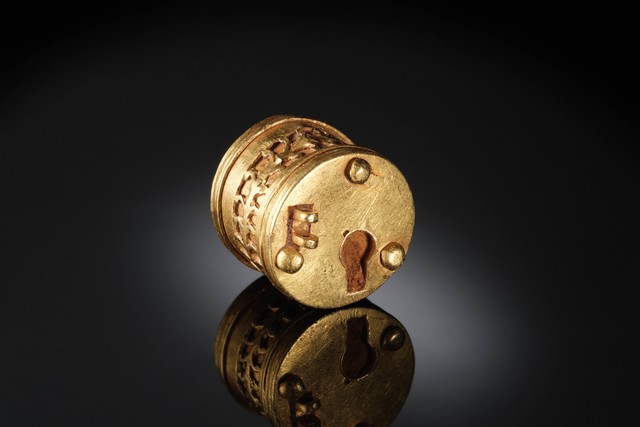A precision mechanical masterpiece in miniature
With the discovery of a golden miniature box lock, an extraordinary and unique archaeological find was made in north-western Germany by a licensed detectorist.
The object represents an extremely reduced and valuable version of the provincial Roman box locks. These everyday objects were in general significantly larger and normally made either of iron, iron with silver or bronze bands or bronze.
In order to clarify whether the lock was functional despite its small format, X-ray radiography and tomography were carried out. Due to the high density of gold, the results of these experiments were unsatisfactory. At PSI, a second attempt was carried out by means of neutron tomography. The experiment was performed at the thermal neutron imaging beamline NEUTRA at the spallation neutron source SINQ. The neutron tomography data revealed a type of ironlocking mechanism, which to this point was not known for the utilization in box locks.
The investigation hence proves that the miniature lock, which dates back to 3rd or 4th century AD, was once fully functional. What it was once supposed to lock remains a mystery – due to its fragility the use was probably only symbolical, similar to a diary lock nowadays.
A mystery remains also how it ended up in East Westphalia; it may have found its way to the northwest of Germany as trading or looted good. Maybe, it also reflects a local elite living in this region; a person belonging to such an elite might have reached for example high ranks in the Roman military and received the exquisite gem as a gift?
In any case, the outstanding find sheds new light on the relationship between local elites and the Roman Empire. In addition, the high image quality, which is currently only achievable using neutron CT, which is still only rarely used for archaeological finds, offers new and detailed insights into the high level of artistry of provincial Roman craftsmanship.
Text: David Mannes (PSI) and Julia Hallenkamp-Lumpe, Ulrich Lehmann, Eugen Müsch (all LWL-Archäologie für Westfalen)
